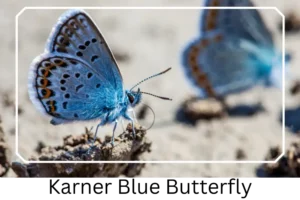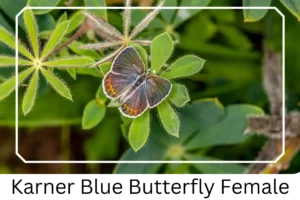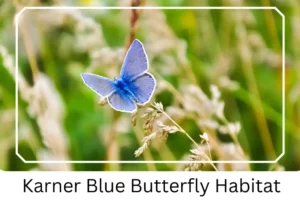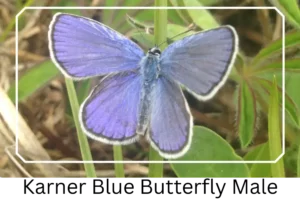Karner Blue (Plebejus melissa samuelis)
The Karner Blue butterfly, a subspecies of the small blue butterfly, epitomizes the fragile beauty found within the limited regions of the United States. This diminutive yet striking creature thrives in the presence of wild lupine fields but faces the challenge of survival as it has been classified as endangered (‘At Risk G3’) by NatureServe. The Karner Blue’s existence highlights the delicate balance of ecosystems and the importance of conservation efforts.
Scientific Classification
- Family: Lycaenidae
- Genus: Plebejus
- Common names: Blue Karner Butterfly
- Scientific Name: Plebejus melissa samuelis
Overview
The Karner Blue butterfly’s habitat, restricted to specific areas, underscores its unique place in the ecosystem. Predominantly found in Wisconsin, with populations in New York, Minnesota, New Hampshire, Indiana, Michigan, Ohio, and potentially Illinois, these butterflies are a testament to the biodiversity that exists within the United States. The Karner Blue’s reliance on the wild lupine plant for its lifecycle stages from larva to adult underscores the interconnectedness of species and the significance of habitat preservation.
Description and Identification
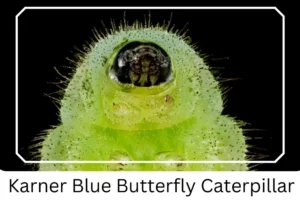 Caterpillar
Caterpillar
The journey of the Karner Blue begins with its caterpillar stage, where it exhibits a vibrant green hue, marked by a distinctive vertical line across its body. These minute larvae, measuring just a few millimeters, embark on their first challenge of survival by navigating to the host plant to feed on its leaves. This crucial phase lasts three to four weeks, culminating in the formation of a chrysalis.
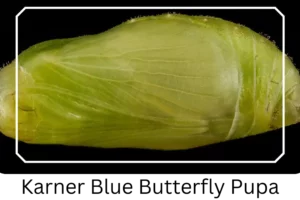 Pupa
Pupa
The pupa stage is characterized by a light green chrysalis, marking a period of transformation over 8-11 days. During this time, the larva metamorphoses into the adult butterfly, ready to grace the skies with its presence.
Adult Butterfly
The adult stage of the Karner Blue showcases the marvel of nature’s design, particularly evident in the sexual dimorphism between males and females.
Sexual Dimorphism: Males boast a silver or dark blue dorsal side with dark margins, while females display a gray-brown to blue gradient, accented with orange bands.
Color and Appearance: In their resting state, both sexes reveal a gray ventral side adorned with orange crescents and black spots, creating a stunning visual contrast.
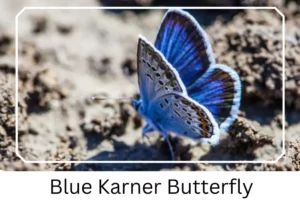
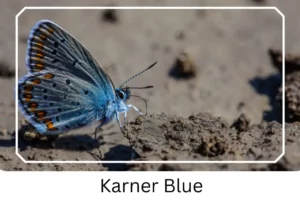 Average Wingspan: The Karner Blue spans approximately 1 inch across its wings, a testament to its petite size.
Average Wingspan: The Karner Blue spans approximately 1 inch across its wings, a testament to its petite size.
Flight Pattern: Known for their fast, erratic flight, these butterflies exhibit a lively dance as they move from flower to flower.
Eggs
The lifecycle begins anew with the laying of eggs on lupine plants in late summer, tiny spheres of potential at about 1 mm in diameter.
Quick Facts | |
| Distribution | Predominantly in Wisconsin, with populations also in New York, Minnesota, New Hampshire, Indiana, Michigan, Ohio, and possibly Illinois. |
| Habitat | Favors sunny fields adorned with wild lupines. |
| Lifespan of Adults | Ranges from 3 to 5 days. |
| Host Plants | Exclusively wild lupine plant leaves. |
| Adult Diet | Primarily nectar from flowers. |
How to Identify Karner Blue Butterfly?
Identifying the Karner Blue butterfly involves observing several key characteristics. Look for small, fast-flying butterflies with a wingspan of about 1 inch. Males are predominantly silver or dark blue on the dorsal side, whereas females may vary from gray-brown to blue, both featuring distinctive orange bands and black spots on the underside of their wings. The presence of these butterflies is often a good indicator of healthy wild lupine populations, their primary host plant. Observing these creatures requires patience and a keen eye, especially considering their endangered status and the brief lifespan of the adults.
Did You Know?
- Karner Blues are known to travel approximately 300 meters in their lifetime, showcasing their limited range but intense loyalty to their habitat.
- The survival of the Karner Blue is intricately linked to the presence of wild lupine plants, making them an indicator species for the health of their ecosystem.
- Despite their short adult lifespan, these butterflies play a crucial role in pollination, contributing to the biodiversity and health of their habitats.
Conclusion
The Karner Blue butterfly, with its distinct characteristics and fragile existence, serves as a poignant reminder of the natural world’s intricacies and the importance of conservation efforts. Through understanding and protecting the Karner Blue and its habitat, we not only ensure the survival of this beautiful species but also maintain the biodiversity that enriches our planet.
Karner Blue Pictures

Scientific Classification

- Family: Lycaenidae
- Genus: Plebejus
- Common names: Blue Karner Butterfly
- Scientific Name: Plebejus melissa samuelis

